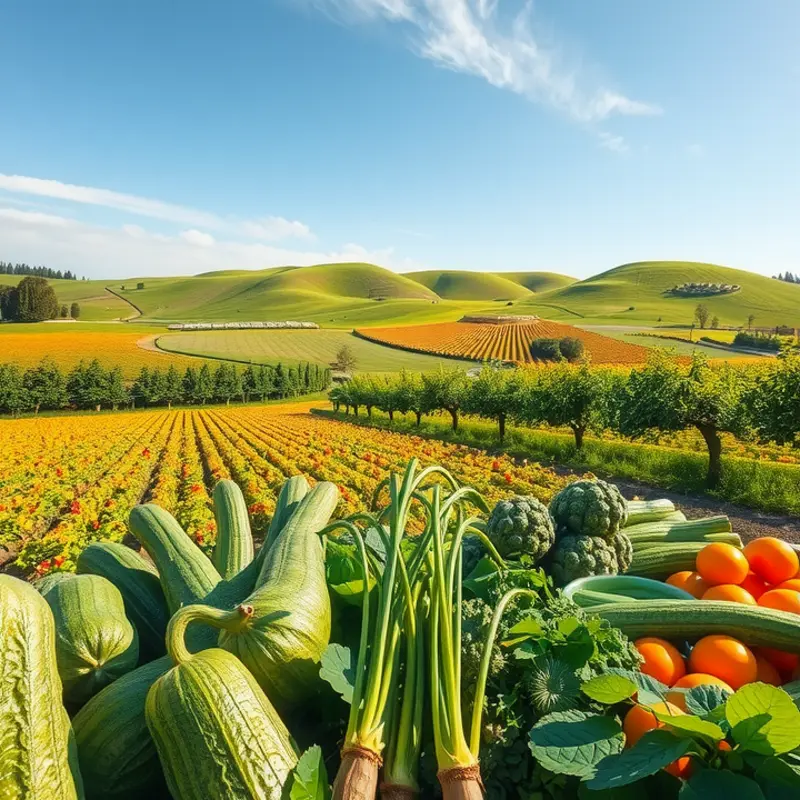Making eco-conscious decisions in our food choices can significantly impact our planet. Climate-smart grocery lists empower environmentally-aware individuals to shop sustainably. By prioritizing local produce, plant-based options, and ethically sourced ingredients, each shopping trip can contribute to a healthier planet. This guide will walk you through creating a grocery list that aligns with your values and encourages sustainable practices.
Crafting a Sustainable Grocery List: Essential Principles

Creating a sustainable grocery list requires knowing key principles that prioritize environmental well-being. First, focus on choosing local and seasonal produce. This reduces the carbon footprint associated with long-distance transportation. Choosing items that are in season not only supports local economies but often results in fresher and more nutrient-rich produce.
Seek out organic options where possible. Organic farming practices often avoid harmful synthetic pesticides and fertilizers, nurturing soil health and reducing pollution. Although organic products can be slightly more expensive, investing in them supports more sustainable farming practices.
When considering protein sources, prioritize plant-based foods. These typically have a smaller environmental impact compared to animal products. Legumes, nuts, and whole grains are excellent protein sources that require fewer resources to produce. Pulses like lentils and chickpeas not only offer versatility in meal preparation but are also rich in nutrients.
Besides food selection, think about packaging. Opt for items with minimal or no packaging to reduce waste. Bulk purchasing is a great way to minimize packaging and often saves money. Bring reusable bags and containers to further decrease your consumption of single-use plastics.
Animal products can sometimes be unavoidable. In such cases, select those with proven sustainable practices. Look for certifications or labels indicating high welfare standards or sustainable sourcing.
Consuming responsibly sourced seafood can also contribute to sustainability. It is crucial to know which fish are abundant and sustainably fished, focusing on those that do not harm ecosystems when harvested.
Taking these steps aligns your grocery habits with a sustainable food system. For additional tips on reducing food waste at home, consider exploring practical ingredient batching, which can further enhance your eco-friendly shopping practices. By following these principles, you contribute to a healthier planet while enjoying a diet that’s both diverse and flavorful.
Nourishing the Planet: Smart Substitutions and Choices

Transitioning to an eco-friendly grocery list involves more than just picking greener products; it focuses on making thoughtful food choices that benefit both you and the environment. For many, reducing meat consumption is a pivotal step. By choosing plant-based proteins like lentils and chickpeas, you meet nutritional needs while reducing your carbon footprint significantly. These legumes are versatile and can enhance soups, stews, and salads, offering a rich source of protein and fiber without the environmental cost associated with meat production.
When it comes to dairy, plant-based alternatives like almond or oat milk present an opportunity to lower greenhouse gas emissions. These options utilize less water and land, making them a sustainable choice. Moreover, they cater to a variety of dietary preferences and contribute subtly different flavors and textures to your meals, perfect for those experimenting with new recipes.
Choosing whole foods over processed items is another powerful way to reduce waste. Whole foods often come with less packaging, diminishing your ecological footprint. Grains like quinoa and brown rice are optimal choices, delivering nutrition while minimizing the need for plastic wrapping. Both grains can serve as bases for a multitude of dishes, allowing you to explore diverse culinary landscapes.
Exploring smart substitutions doesn’t stop at individual meal ingredients. Consider your kitchen habits as well; preparing meals in batches can conserve energy and reduce waste. For ideas on efficient meal preparation, you might want to explore practical ingredient batching, which offers strategies that save time while preserving resources.
These mindful decisions collectively promote a healthier lifestyle and a more sustainable planet. Each choice we make contributes to a larger movement towards protecting our environment. By reevaluating our grocery lists and modifying our consumption patterns, we not only enhance our well-being but also participate in the crucial responsibility of nourishing the planet.
Final words
Creating a climate-smart grocery list is an empowering way to make a positive impact on the environment while nourishing yourself and your family. By focusing on locally sourced, seasonal, and predominantly plant-based foods, you can greatly reduce your carbon footprint and support sustainable agriculture. Remember, small changes in your shopping habits can lead to significant benefits for the planet. Embrace these practical strategies and inspire others to make eco-friendly food choices. Your efforts not only foster a brighter future for our environment but also contribute to a healthier lifestyle.








